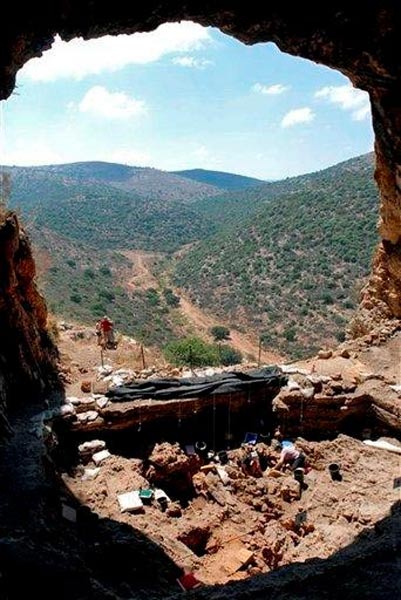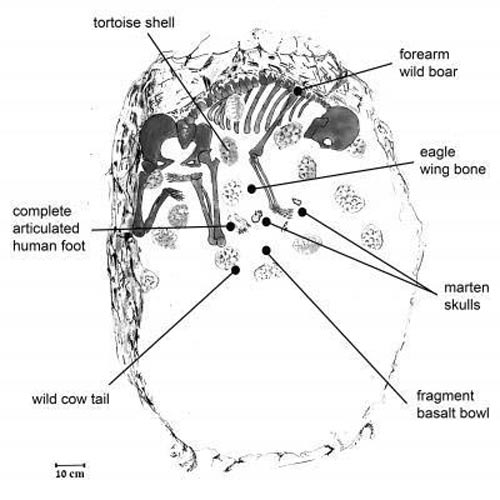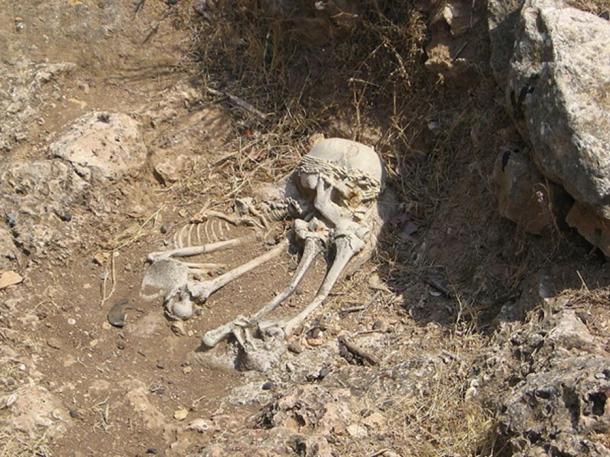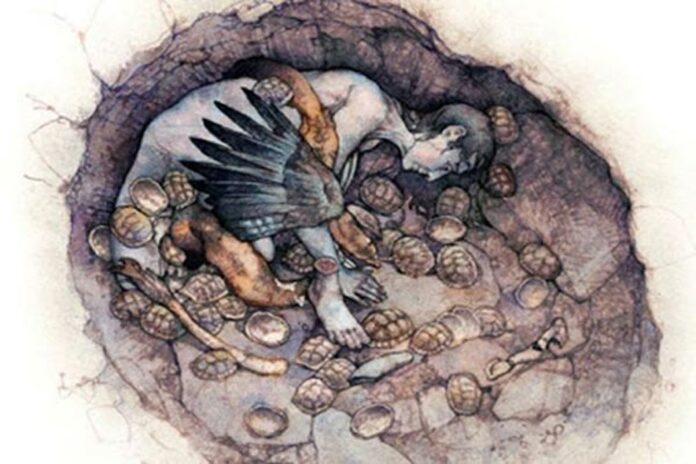The archaeological discoveries at the Hilazon Tachtit Cave site in northern Israel have shed remarkable light on the elaborate burial rituals of a mysterious shaman woman who lived over 12,000 years ago. This rare glimpse into the funerary practices of the Natufian people, who were transitioning from a hunter-gatherer lifestyle towards early agriculture, provides invaluable insights into the social and ritual complexities of this pivotal period in human history.
Uncovering an Extraordinary Burial

In 2008, a Hebrew University archaeologist uncovered a remarkably well-preserved grave in the Hilazon Tachtit Cave, along the bank of the Hilazon River in western Galilee. The grave, measuring approximately 0.70 m x 1.00 m x 0.45 m, contained the remains of a 1.5 meter-tall woman, accompanied by a vast array of carefully selected and placed objects.
The body was laid on a bed of specially curated materials, including gazelle horn cores, fragments of chalk, fresh clay, limestone blocks, and sediment. Remarkably, 86 tortoise shells were positioned under and around the woman’s body, along with sea shells, an eagle’s wing, a leopard’s pelvis, a wild boar’s forearm, and even a human foot. Atop the body, a large stone was placed to seal the burial space, indicating the significance of this funerary ritual.
Reconstructing the Ritual Sequence

Eight years after the initial discovery, researchers from the Hebrew University of Jerusalem and the University of Connecticut have meticulously reconstructed the sequence of events that unfolded during this extraordinary funeral ritual.
The process began with the excavation of an oval grave pit in the cave floor. A layer of objects, including seashells, a broken basalt palette, red ochre, chalk, and several complete tortoise shells, was then carefully placed between large stones. This was followed by a layer of sediment containing ashes and flint and animal bone debris.
Approximately halfway through the ritual, the woman’s body was laid inside the pit in a child-bearing position, and additional special items, including more tortoise shells, were placed on top of and around her. The grave was then filled with another layer of sediment and limestone blocks of various sizes, directly on top of the body. Finally, the ritual concluded with the sealing of the grave by a large, heavy stone.
The Significance of the Ritual

The researchers emphasize the significant pre-planning and community engagement involved in this funerary event. The collection of materials required for the grave construction, as well as the capture and preparation of the 86 tortoises, must have been a time-consuming and coordinated effort.
“The significant pre-planning implies that there was a defined ‘to do’ list, and a working plan of ritual actions and their order,” said Prof. Leore Grosman from the Hebrew University of Jerusalem.

This ritual event provides rare and valuable insights into the social complexity and ritual practices of the Natufian people, a crucial transitional period in human history as they moved towards an agricultural lifestyle. The researchers note that the “remnants of a ritual event at this site provide a rare opportunity to reconstruct the dynamics of ritual performance at a time when funerary ritual was becoming an increasingly important social mediator.”
Conclusion
The elaborate burial ritual discovered at the Hilazon Tachtit Cave site in northern Israel offers a remarkable glimpse into the beliefs, social structures, and ritual practices of the Natufian people over 12,000 years ago. The meticulous reconstruction of the ritual sequence, the careful selection and placement of objects, and the evident community involvement all point to the profound significance of this funerary event for this pivotal period in human history. This discovery not only expands our understanding of the Natufian culture but also highlights the important role that archaeological research can play in unveiling the complex social and ritual dimensions of our ancestral past.
